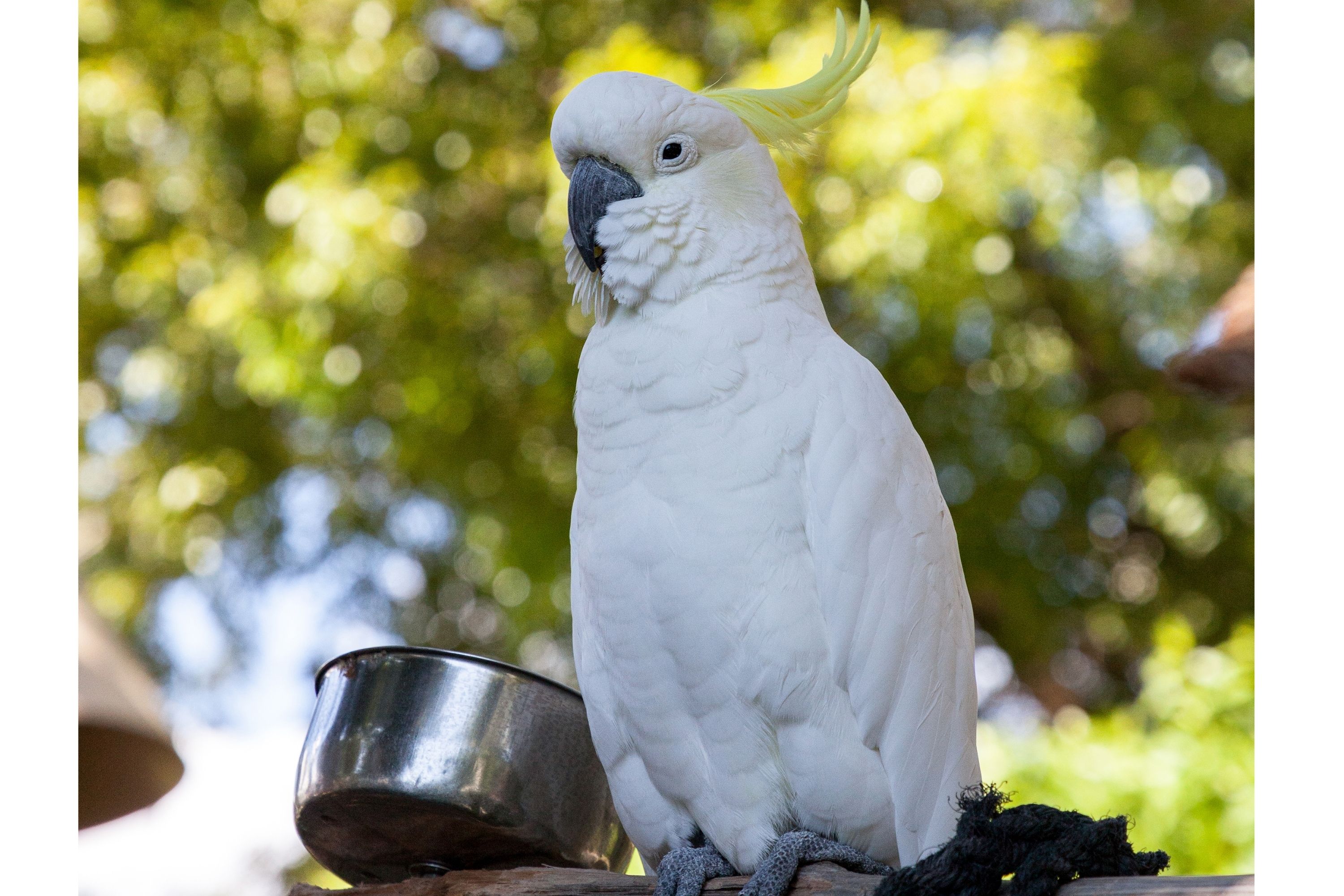Yellow-crested cockatoo
(Cacatua sulphurea)

Description
The yellow-crested cockatoo (Cacatua sulphurea) also known as the lesser sulphur-crested cockatoo, is a medium-sized (about 34-cm-long) cockatoo with white plumage, bluish-white bare orbital skin, grey feet, a black bill, and a retractile yellow or orange crest. The sexes are similar. The yellow-crested cockatoo is found in wooded and cultivated areas of East Timor and Indonesia's islands of Sulawesi and the Lesser Sundas. It is easily confused with the larger and more common sulphur-crested cockatoo, which has a more easterly distribution and can be distinguished by the lack of pale yellow coloring on its cheeks (although some sulphur-cresteds develop yellowish patches). Also, the yellow-crested cockatoo's crest is a brighter color, closer to orange. The citron-crested cockatoo, which is a subspecies of the yellow-crested cockatoo, is similar, but its crest is clearly orange. The yellow-crested cockatoo's diet consists mainly of seeds, buds, fruits, nuts, and herbaceous plants. The yellow-crested cockatoo nests in tree cavities. The eggs are white and usually two in a clutch. The incubation is shared by both parents. The eggs are incubated for about 28 days and the chicks leave the nest about 75 days after hatching. The yellow-crested cockatoo is critically endangered. Numbers have declined dramatically due to illegal trapping for the cage-bird trade. Between 1980 and 1992, over 100,000 of these birds were legally exported from Indonesia, yet a German proposal submitted to CITES to move it to Appendix I was not approved. It has since been moved to Appendix I. The current population is estimated at fewer than 2,500 individuals and is thought to be declining in number. The subspecies C. s. abbotti is found only on the island of Masakambing. Its population on this tiny island (about 5 km2 or 1.9 mi2) had fallen to 10 as of June and July 2008. The decline results from trapping and logging, especially of mangrove (Avicennia apiculata) and kapok trees. Several national parks provide protection of their habitat, including Rawa Aopa Watumohai National Park on Sulawesi, Komodo National Park on Komodo Island, the national parks of Manupeu Tanah Daru and Laiwangi Wanggameti on Sumba, and the Nino Konis Santana National Park in East Timor (Timor-Leste).
Taxonomic tree:







